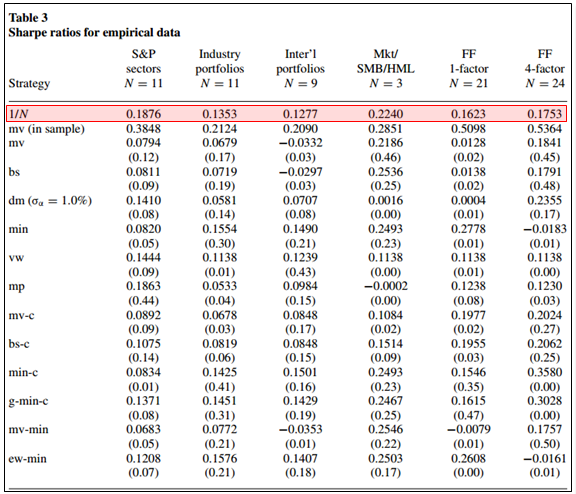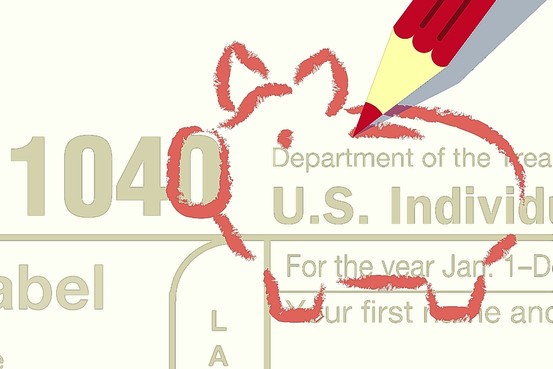Diversify Your Portfolio by Tax Treatment Not Just By Asset Types
Post on: 27 Апрель, 2015 No Comment

WSJ.com Podcast
Hear writer Carolyn Geer discuss why tax diversification can be just as important in your investments as asset class diversification.
But that was when markets were going up and tax rates were going down. These days, with markets so volatile and tax increases looming, more and more advisers are starting to advocate a new and very different approach: tax diversification.
It is akin to hedging against uncertainties in the markets by allocating your assets across a diverse range of investments. With tax diversification, you hedge against uncertainties in the federal tax system by allocating your investments across a diverse range of accounts that are taxed differently—from tax-deferred vehicles such as traditional individual retirement accounts and 401(k)s, to taxable accounts such as bank and brokerage accounts, to tax-free accounts such as Roth IRAs and Roth 401(k)s.
The idea is that by holding a variety of accounts with different tax characteristics, putting the right kinds of investments into each one, and tapping them strategically, you can maximize your after-tax returns, particularly in retirement.
Sure, if you knew your income-tax rate would be lower in the future, it would make sense to plow as much money as possible into tax-deferred accounts. By investing pretax dollars in a regular IRA or 401(k), you would lower your taxable income today and postpone taxes on your contributions and earnings until they are withdrawn, usually in retirement.
ENLARGE
If, on the other hand, you knew your tax rate would be higher down the road, it would make sense to favor Roth IRAs and Roth 401(k)s, where contributions are made with after-tax dollars but can be withdrawn, along with any earnings, tax-free, providing certain conditions are met.
Of course, no one knows for certain what the future holds. Income-tax rates may be headed higher next year if congressional lawmakers don’t extend Bush-era tax cuts, but what will rates be 10 or 20 years from now?
Tax planning isn’t a one-year thing, says Andrea Eaton, a financial planner at Cornerstone Wealth Advisors Inc. in Edina, Minn. According to Ms. Eaton, you need to arrange your affairs so that you have flexibility to manage your taxes over time. Having some tax-deferred, tax-free and taxable money is the way to go, she says.
Account Choices
Taxable bank and brokerage accounts are where you put your living expenses and emergency funds. Typically, you can tap this money penalty-free anytime, and there are no limits on contributions and no withdrawal requirements.
Tax-deferred and tax-free accounts are where you put your savings. Typically, the bulk of this money isn’t accessible before age 59½ without penalty, and there are various limits as to who can contribute and how much. Also, with traditional IRAs and employer-sponsored retirement plans, you must withdraw at least a minimum amount annually after you turn 70½. Roth IRAs have no such requirement.
ENLARGE
Many investors have access to both tax-deferred and tax-free accounts—such as a tax-deferred 401(k) at work and a Roth IRA individually. That became true for more people this year when an income cap on Roth IRA conversions was lifted. Now, high-income earners who don’t qualify to contribute to a Roth IRA have the option of converting an existing tax-deferred account into a Roth, or even contributing to a nondeductible IRA in future years and then converting those funds to a Roth.
In a separate development, President Barack Obama last month signed a new law that will allow some workers to convert their conventional 401(k)s to Roth 401(k)s.
But because investors have to pay taxes on the converted funds upfront, the decision about whether to convert can be complex. Consider getting professional advice, especially if your account is large. Fence-sitters might want to convert at least part of their savings to diversify their account mix and broaden their planning options in years to come.
Where to Put What
To get the most mileage out of your different accounts, fund them with investments that match their tax characteristics. For example, taxable accounts are a good place to hold tax-exempt municipal bonds and muni funds. Taxable bonds and bond funds work well in tax-deferred accounts. And actively traded stocks and actively managed stock funds make sense for Roth accounts where they can grow tax-free, especially if the top long-term capital-gains rate jumps from 15% to 20% next year as scheduled.
Note, too, that the preferential tax treatment for qualified dividends is set to expire next year, meaning all dividends would again be taxed as ordinary income, at rates as high as 39.6%. Currently, qualified dividends are taxed at capital-gains rates. That being the case, you might consider concentrating stocks with higher dividends in IRAs, especially Roths, while keeping lower-dividend-paying stocks held for the long haul in taxable accounts.
What to Tap When
When it comes time to tap your accounts, do it strategically. By picking and choosing which accounts to tap when, you can potentially save yourself thousands of dollars on taxes. Dean Barber, a financial adviser in Lenexa, Kan. provides a typical example of how having a mix of taxable and tax-free assets to draw on in retirement can help protect your Social Security benefits from taxation.
Say you and your spouse retire at 65 with $1 million—your entire savings—in a traditional IRA. Assume, too, you need $80,000 a year to live on, and together you receive $40,000 a year in Social Security benefits. Mr. Barber says you would have to withdraw not just $40,000 a year but $54,000 a year from the IRA to meet living expenses. Why?
Not only would your IRA withdrawals be taxable, but they also would get included in your so-called provisional income, which is used to figure what, if any, taxes you owe on your Social Security benefits. In this scenario, you would end up owing taxes on every dollar you took out of your IRA plus 85% of your Social Security benefits—the maximum percentage.
That’s really the current state of affairs for most people because they have piled most of their assets into the tax-deferred accounts, says Mr. Barber.

If instead you had $600,000 in the IRA and $400,000 in a taxable brokerage account, you could withdraw from the brokerage account just $40,000 a year in securities on which you don’t have a net capital gain. That money wouldn’t be taxable because it has already been taxed, and it wouldn’t be included in your provisional income, so none of your Social Security benefits would be taxable either. In effect, you let the principal from the brokerage account feed your income needs for the first five years of retirement until you reach age 70½, when you are forced to start taking distributions from your IRA. This strategy would save you $70,000 in taxes over the five years.
Manage Your Tax Bracket
Because they are taxed as ordinary income, withdrawals from traditional IRAs and 401(k)s also can have the unfortunate effect of pushing you into a higher tax bracket and exposing you to higher tax rates in the future if rates rise. Having a tax-free account such as a Roth IRA in the mix can help you do a little tax-bracket management.
A single retiree who wants to withdraw $50,000 from savings this year could take $34,000 from a traditional IRA and the remaining $16,000 from a Roth IRA and still remain in the 15% marginal income tax bracket, according to an analysis by T. Rowe Price Group Inc. The total federal tax owed would be $4,681, leaving $45,319 to spend after tax. Alternatively, if the same retiree withdrew the entire $50,000 from his traditional IRA, some of the withdrawal would be taxed at the 25% marginal bracket, resulting in $8,681 in total taxes owed. This would leave just $41,319 to spend after tax.
Avoid the Medicare Surtax
Even retirees in higher tax brackets who don’t expect to exhaust their retirement accounts in their lifetimes can save with some tax diversification. Take the new 3.8% Medicare surtax on unearned income, which becomes effective in 2013 for married taxpayers with adjusted gross incomes over $250,000.
David Hill, a financial planner with Brinton Eaton Wealth Advisors in Madison, N.J. contrasts two hypothetical couples, each with $1.4 million in retirement assets. One couple has only a traditional IRA. They turn 70½ in 2013 and take a $50,000 minimum required distribution, which pushes their income above the $250,000 mark. They deposit the $50,000 into a taxable account, where it generates interest and dividends that will be subject to the 3.8% surtax.
The other couple has half their assets in a traditional IRA and half in a Roth IRA. They are required to withdraw just $25,000 a year from the traditional IRA, which keeps their income below $250,000. They deposit their distribution in a taxable account, where it generates a smaller amount of interest and dividends.
Mr. Hill figures the first couple would end up owing around $64,000 in federal taxes plus an additional $1,500 in Medicare surtaxes, versus $50,000 in federal taxes and no Medicare surtaxes for the second couple.
It’s easy to see that the tax savings year to year could be substantial, he says.
Correction & Amplification:
An earlier version of this article noted that retirees in their 60s may be able to save on taxes by tapping taxable accounts for living expenses and delaying dipping into individual retirement accounts. In a hypothetical example from financial adviser Dean Barber in Lenexa, Kan. the estimated tax savings over five years should have been given as $70,000, not $150,000.
Ms. Geer is a writer in Fairfield, Conn. Email her at reports@wsj.com .














